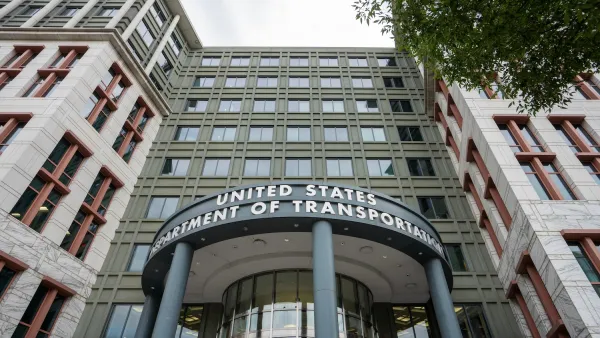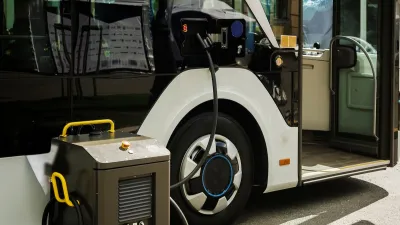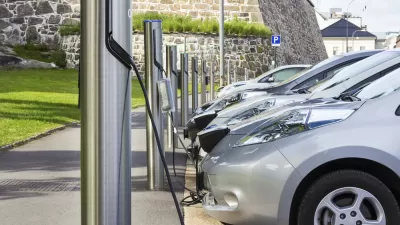The dream of high-quality, zero-emission transit in all large U.S. cities is possible.

Yonah Freemark writes for the Urban Institute about what it would take for the federal government to effectively invest in zero-emission transportation at the local level, as prioritized by the campaign platform of President-elect Joe Biden and written into the Moving Forward Act, dormant in Congress after clearing the U.S. House of Representatives in July of this year.
Freemark's examination of the question of what it would take to deliver high-quality public transit starts with the current realities of transit in the country, finding wide disparities by geographic area and social and demographic markers.
For many low-income people and people of color, transit offerings are often subpar and access is unfairly distributed: the amount of transit service typically provided is 37 percent less comprehensive in the quartile of urban areas with the highest poverty rates, compared with their wealthiest counterparts, adjusted for population. Transit access is roughly 24 percent worse in the quartile of urban areas with the most Black residents, compared with those with the fewest.
Turning attention then to how effective transit investments would be given disparities in transit quality, Freemark estimates the cost of increasing transit service quantity in all urban areas with 100,000 or more residents, using
Chicago, Dallas, Los Angeles, New York City, and Washington, D.C. as goal posts.
Improving transit quality in every urban area to, at minimum, conditions in the Dallas region would cost an additional $2.2 billion annually. This would be a 4.5 percent increase nationally in operating budgets but would expand per capita transit service by 30.3 percent for the average urban area. Improving minimum transit quality to Chicago’s level would cost $16.7 billion but would more than double average per capita transit service provided throughout the country.
After factoring in zero-emission electric vehicles, Freemark concludes that high quality transit in the United States is possible.
FULL STORY: What Would Providing Every City with High-Quality, Zero-Emissions Public Transportation Look Like?

Maui's Vacation Rental Debate Turns Ugly
Verbal attacks, misinformation campaigns and fistfights plague a high-stakes debate to convert thousands of vacation rentals into long-term housing.

Planetizen Federal Action Tracker
A weekly monitor of how Trump’s orders and actions are impacting planners and planning in America.

In Urban Planning, AI Prompting Could be the New Design Thinking
Creativity has long been key to great urban design. What if we see AI as our new creative partner?

King County Supportive Housing Program Offers Hope for Unhoused Residents
The county is taking a ‘Housing First’ approach that prioritizes getting people into housing, then offering wraparound supportive services.

Researchers Use AI to Get Clearer Picture of US Housing
Analysts are using artificial intelligence to supercharge their research by allowing them to comb through data faster. Though these AI tools can be error prone, they save time and housing researchers are optimistic about the future.

Making Shared Micromobility More Inclusive
Cities and shared mobility system operators can do more to include people with disabilities in planning and operations, per a new report.
Urban Design for Planners 1: Software Tools
This six-course series explores essential urban design concepts using open source software and equips planners with the tools they need to participate fully in the urban design process.
Planning for Universal Design
Learn the tools for implementing Universal Design in planning regulations.
planning NEXT
Appalachian Highlands Housing Partners
Mpact (founded as Rail~Volution)
City of Camden Redevelopment Agency
City of Astoria
City of Portland
City of Laramie





























